Honoring Major Taylor, “one of the great heroes of the day:” Q&A with Darrell West, president and CEO of the Major Taylor Cycling Club of Denver
Denver’s Cherry Creek Trail got a new mural in late June honoring Major Taylor (1878-1932), the first black bicycling world champion.
Bicycle Colorado sat down with Darrell West, president and CEO of the Major Taylor Cycling Club of Denver, to talk about Major Taylor’s impact, the club, the mural and much more. Learn more below.
Tell me about the Major Taylor Cycling Club of Denver
The Major Taylor Cycling Club of Denver is a cycling club that I started in 2011 while I was working at the Denver Public Library. While I was working there, there was a need for the youth that were around the library—I worked at the Pauline Robinson Library, and we had a bunch of inner city kids that frequented that library, and they didn’t have much to do. Most of them had bikes at home in their backyard or in the garage but they weren’t working, either because the chain or the tires or whatever.
So initially I started the Major Taylor Cycling Club of Denver to assist inner city youth with learning how to maintain their bikes and take care of them. Hopefully that way they would see some value in them, use them and continue their upkeep on their own, without letting the bikes sit in the backyard, unused. And from there, it kind of grew into what it is today with group rides, volunteer dates and local support throughout the Colorado cycling community.
How many people are in the Major Taylor Cycling Club of Denver at this point?
We have roughly 80-90 members, and they’re nationwide. We don’t have a stringent membership application that requires members to do specific things. We keep our membership free, they’re welcome to ride with other clubs and do other things they want to do. We just ask them to support and spread the word about Major Taylor.
How does helping kids learn to use and like their bikes turn into Major Taylor Cycling Club of Denver?
I was a new cyclist at the time. I started riding in 2008 or 2009 on the weekends. As I got more into cycling I was bumping into all these youth and all these kids who had materials and who loved bikes, but didn’t know how to maintain their own bike. That was my initial motivation to become involved with them, and just to keep them out of trouble.
The kids today have it a lot rougher than we did growing up. We had the freedom to walk around the neighborhood and go and come to the different rec centers and their programs without a lot of fear about what’s going on in the world today. These kids don’t have it as easy. We have a lot of kids out milling around in groups which leads to getting into trouble. So we saw value in keeping them active, teaching them how to maintain their bikes and then getting a little value out of being proud of your equipment and knowing how to maintain and ride it.
Some of our families that we ride with, they use their bike as modes of transportation. A lot of them can’t afford bus passes, don’t have cars, and this is how they get around town, to the store, to work and back. We just wanted to be an organization that had resources for folks, for regular people, to tap into to get what they need to keep going. And that, the cycling piece, turned into healthy living. We wanted to have any kind of resource available so that somebody in the community could come to us and say “I’m looking for a yoga class.” We wanted to have a resource that we could feed them, and that’s what we did.
We weren’t the expert in every field, but we did have the resources to connect people.
Where does Major Taylor and his history come into this?
I was a new cyclist, and there was a guy working at the library with me named Christopher Brown. He was an avid cyclist. He was one of the guys who rode in the winter in his goggles and gloves and I didn’t even know if he owned a car, but he owned three or four bikes. He’s the one who told me about Major Taylor, and once I read the story of Major Taylor I was excited to find that there was a hero of color that these kids could actually look up to. A model.
In the inner city neighborhoods we have a lot of sports. We have baseball in the summer, we have football, we have basketball, and for the girls we have cheerleading, and that was about it when we started. Now we have a lacrosse program that is involved with inner city youth. We have different soccer programs for inner city youth, so why couldn’t we have a cycling program that focuses on inner city youth without all of the bells and whistles as far as costs go.
Once you get into his full story, you see his character, how he carried himself, the things he believed in, how he created a path of greatness for himself when there really wasn’t one.
We just wanted the kids to learn about cycling, learn how to maintain their bike, and lead an active and healthy life.
How important is representation for you and the kids that you work with?
I think it’s very important for the kids, for the inner city kids to see someone like them who has achieved greatness.
So many times these days, even in the family unit, they may not have someone to look up to. We are doing our best to find people—role models, spokespersons—that look like our youth and that they can look up to and model their lives after, who have everything in place. The story of Major Taylor is like that. He never was in trouble, he did his best to steer clear of any kind of controversy and ill-feelings toward anybody. He was just a great person, and if we can get our kids to take on some of those attributes then maybe we’ll make society a little better.

Darrell West (center), Jonathan Pucci (right) and members
of the Major Taylor Cycling Club of Denver celebrating the new
mural on the Cherry Creek Trail before its completion on June 27
What do you teach the kids about Major Taylor?
The first hour of our programs we go over the Air, Brakes and Chains maintenance and then we go over the history of Major Taylor’s accomplishments and what it means to be a part of the Major Taylor Cycling Club of Denver.
I try to put it in terms they can relate to. A lot of kids these days they know Lebron James and Michael Jordan, they may know about Muhammad Ali and folks like that. I try to describe Major Taylor as being one of those superior athletes—the very first one to achieve the status of World Champion—and then I try and take out all the negative press about the people today that we idolize.
Our heroes all have this scathing background or something in their history that the world knows about, and there was nothing that Major Taylor did throughout his lifetime that we know about that fell into that category.
I mold him like that. One of the great heroes of the day that didn’t have all that negative press and just lived his life the right way. And because of that, he was able to achieve everything he did.
Do you talk about the adversity that he faced?
He was not welcome anywhere, and once he started winning it made it even worse for him. I think [white riders] finally accepted they would have a person of color in the race, but to have him come and win the race and then be an affluent figure in everything cycling related, I don’t think that’s what they expected.
We talk about all of that. We talk about him being physically assaulted—there was a race that he won and he was physically assaulted and choked out after it. We talk about all that stuff, and we talk about his reactions. And that’s why one part of the ABC program is “Thinking for a Change.” What we try to do with Thinking for a Change is have the kids rehearse and think about what the outcome of a given action might be before they take the action. If they think about the action before they do it, hopefully that will stop them from doing whatever it is that’s going to get them in trouble.
We ask them, “What would you have done in Major Taylor’s situation?” and most of the kids admit they don’t think they could have gone through it and still raced. “I would have retaliated” they say, and that’s true for most adults too. Major Taylor had a grace and a dignity about him that let him endure certain things that I’m not even sure I could endure.
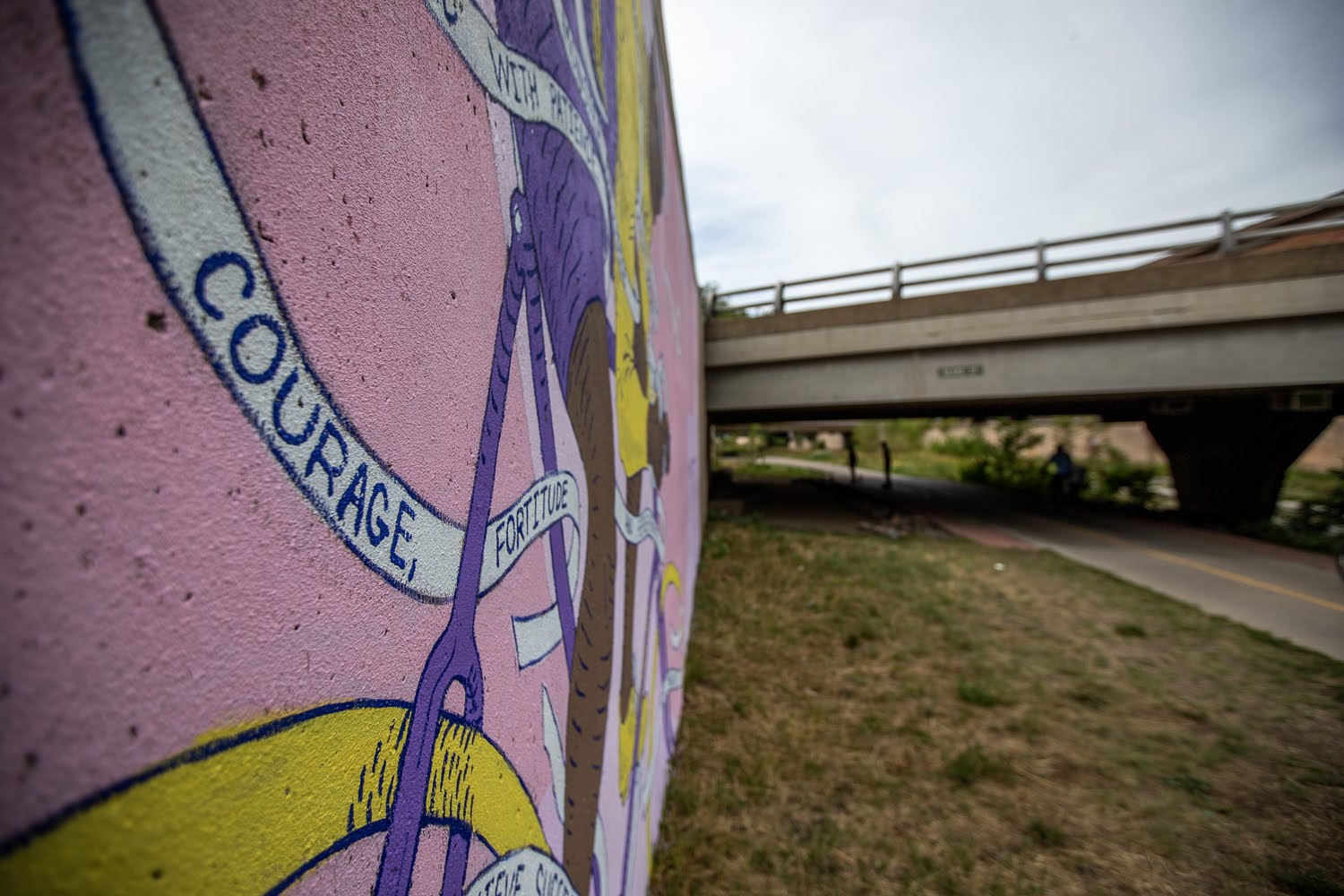
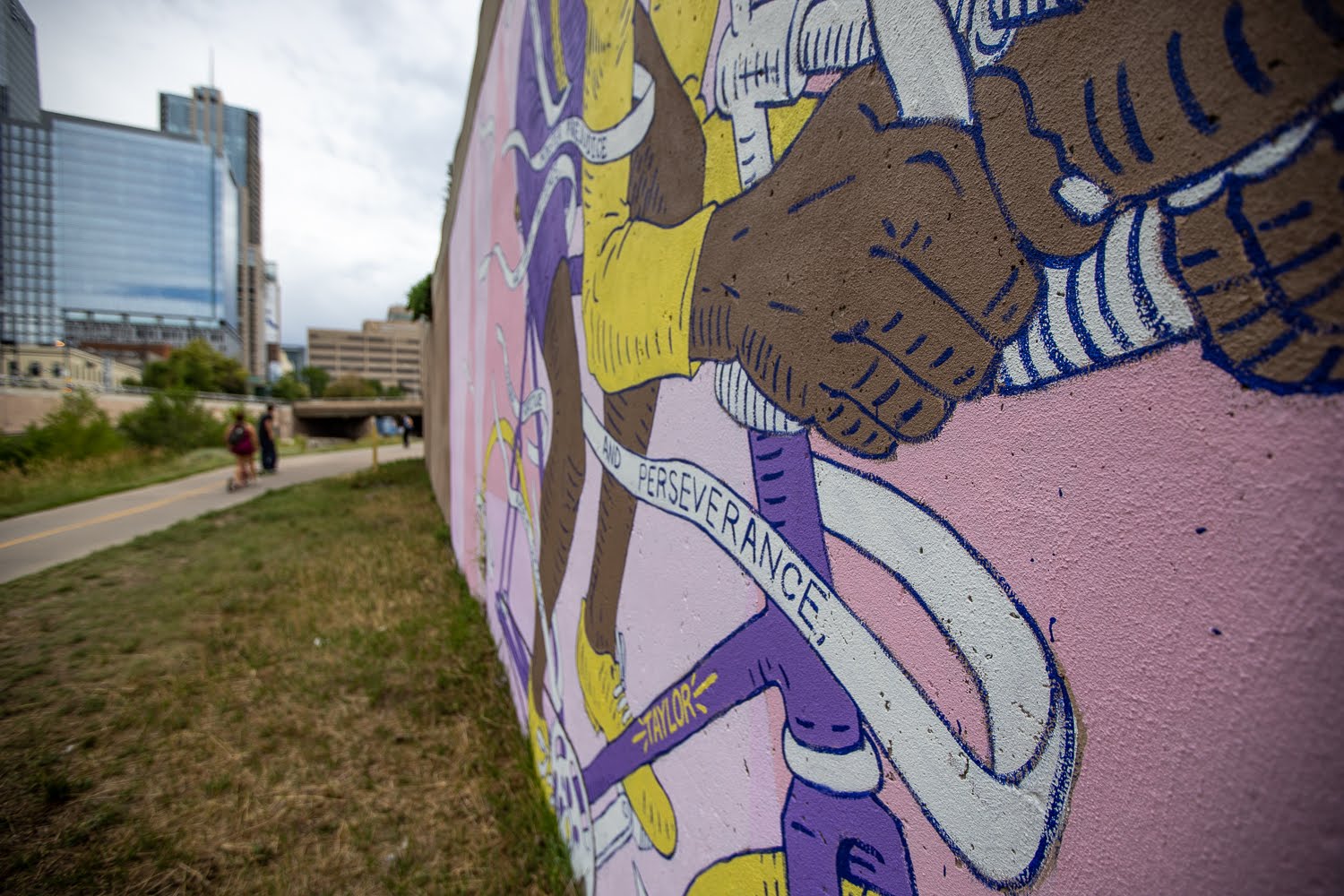
Were you involved in bringing the new mural to the Cherry Creek Trail?
The new mural was something that Jonathan [Pucci, the mural’s artist] had been talking about. He wrote the proposal and got in touch with me during the proposal process. He didn’t think he was going to be awarded one of the mural spots, so we were trying to get businesses involved in case the city didn’t pick it up so we could run with it anyway.
He, at the last minute, got the proposal and he called me that week. He was out here within four days of him receiving the grant to do the mural. When he called us is when I hopped into action and started communicating with my constituency, including you guys.
What does the mural mean to you?
It’s been a little emotional.
Knowing where I came from, and how I started the club, I never expected to have a mural of Major Taylor somewhere in Denver, much less on the Cherry Creek path. We used to meet at Cooke Park and we would ride up Cherry Creek Trail to REI and to Hudson Gardens and back out to the reservoir, so that was our main bike path that we rode on.
The story of Major Taylor, if you do a little research and find out about him, it’s one that’s inspiring for everybody, not only our inner city kids.
Early on we talked about naming a portion of the trail after Major Taylor, and we had some folks look into that, so for the mural to go up right there on the Cherry Creek bike path was exciting for me, it was emotional for me.
I’ve been out there by myself, with my kids, with people from my family and some of my supporters who were there when I didn’t have members. It’s very exciting to have a mural of Major Taylor here in the city, knowing that this is what our club members and our supporters have been advocating for for nine years now.
What do you hope the average person takes from seeing the mural while riding down the Cherry Creek Trail?
I hope they learn the story of Major Taylor. At a quick glance, you’d know that he was a professional bike rider way back in the day, as my kids say, but that doesn’t fill his full story.
Once you get into his full story, you see his character, how he carried himself, the things he believed in, how he created a path of greatness for himself when there really wasn’t one. There was no way he should have been where he was, but all the things he did in his life that were of character kind of placed him in the position to be able to be a world champion.
He started out when he was 10 years old at a bike shop in Indiana, where the shop owner saw value in him. A little kid doing tricks on a bike. So he put him in front of his store, put him in a Majors outfit to attract more customers in his bike shop, and that’s the same guy who got him into racing a couple years later when he won his first race.
So the story of Major Taylor, if you do a little research and find out about him, it’s one that’s inspiring for everybody, not only our inner city kids.
When I met Dave Edwards of Primal, he told me “I stopped at your booth because I have this book on my desk as we speak.” He was in the middle of reading the book, and it’s things like that that make it great for me.
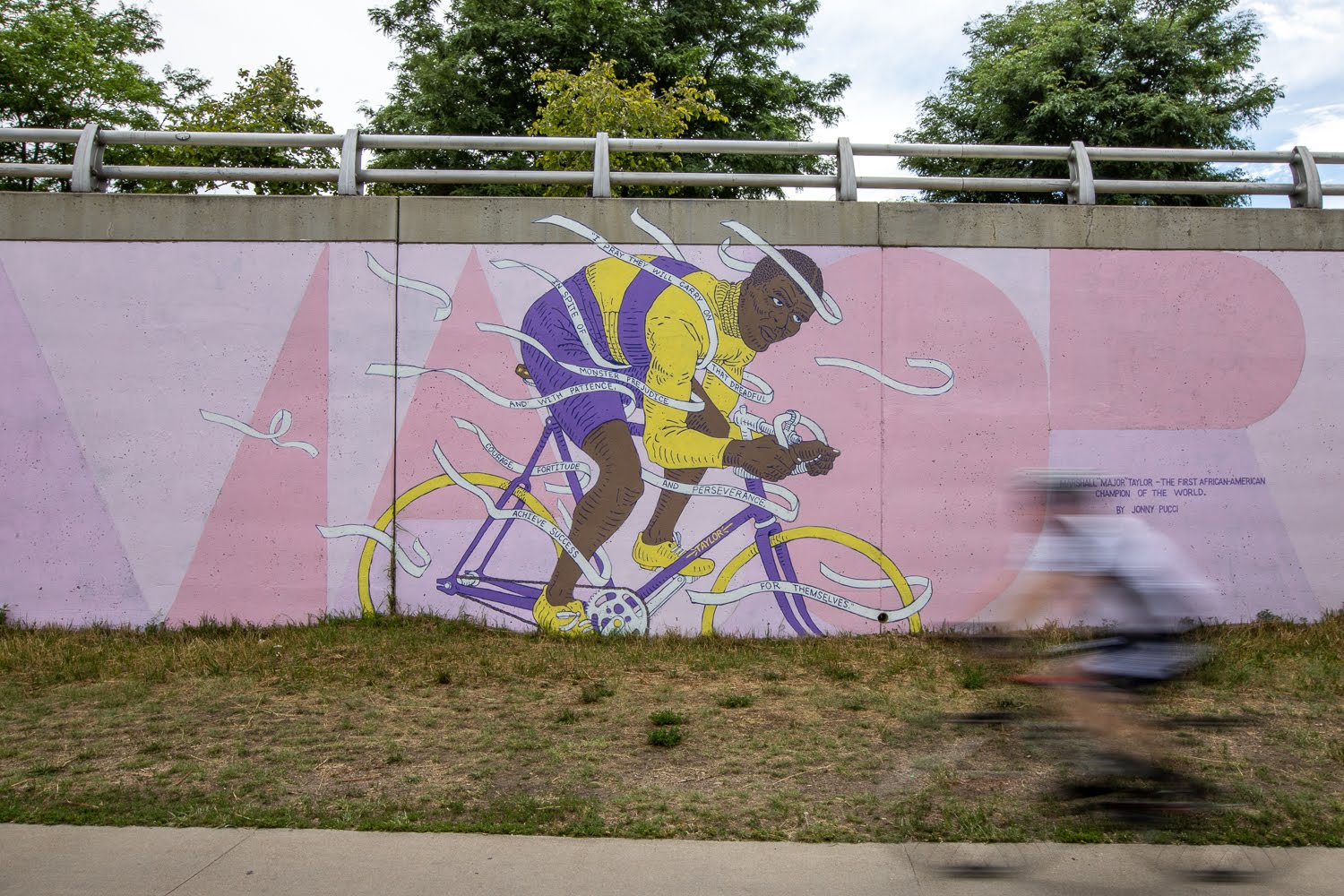
What can we do, as individuals, to raise awareness of his story?
I’ve had this discussion before with a few people. These days I think we are so into fads and trends that we need to get the story of Major Taylor out, but how does that look for us? Some of the kids I run into every day, who are football players or basketball players or the guys walking around on the streets who aren’t into sports, that’s who I want to connect with. Those are the people who need to know the Major Taylor story, because if you’re a cyclist you may have heard about him. If you’re a sports player in the inner city you may have heard about him. But I want to get to those folks that need us in the community.
We have kids in the community that need us, who are living with their grandparents, who are at home by themselves all day, we have kids in our community who are working and needing to pay half the bills for their family. Those are the kids who need the motivation of the Major Taylor story, to maybe even get their lives together and let them know that they can do it and win this thing called life.
What can Bicycle Colorado do to raise awareness?
I think we need to collaborate and just continue getting kids on bikes and teaching them the story of Major Taylor and the values of it.
Right now what’s disappointing to me is that I see cyclists ride between cars, blow lights, not following the laws, and I think to myself, “that’s why we have so hard a time as a cycling community getting support or getting things done.” We have to be out here following the rules, teaching the kids the right way.
Cycling is not all about speed, there’s these different levels to cycling, and you learn more as you get into it and go along. You might start building your own bikes, you might start racing, you might find that you love touring, but there’s a lot of different things going on in the cycling world, and all of these kids should be able to access it. It’s all about access, and that’s what our organizations in Colorado are very good at, and that’s what we have to keep doing. Providing access for our youth to get involved in these types of things.
What do you get from riding a bike?
For me, it’s freedom.
Initially, riding a bike was first and foremost because I wanted to get my health in check. I didn’t want to be on blood pressure pills or cholesterol pills or anything like that. But once I started riding it gave me a sense of freedom. Once you start churning those pedals, your mind is just relaxed. You don’t have all those worries you started out with.
It’s just a release for me to get out on the trails and just go for a ride and clear my mind and clear my thoughts.
And do you think the kids you work with get the same thing? What do you hope they get from riding a bike?
I think they will grow into feeling like that. Right now I think they like riding bikes because they just love riding bikes, they love being outside, they love feeling that freedom of being able to go where they want to go without the restriction of riding in their parents car and them being in the store with you. You have a little freedom once you’re on your bike.
We want to teach them to be responsible and trustworthy and things like that while they’re out there, so we’re not worried about them being hurt or something happening to them while they’re out there.
Want to support the Major Taylor Cycling Club of Denver?
Visit their Facebook page to get involved.
Want to support Bicycle Colorado’s work?
Become a member today. Membership is a simple and easy way to ensure that we can continue to work for you and all other people who bike in Colorado.
Leave A COMMENT
Our twitter feed is unavailable right now.
The Latest News
view all- Jun 13, 2024
- by Bicycle Colorado
Discover Denver With Denver Century Ride
- Bicycling in Colorado,
- Denver,
- Event Member Spotlight,
- Events
- No Comments
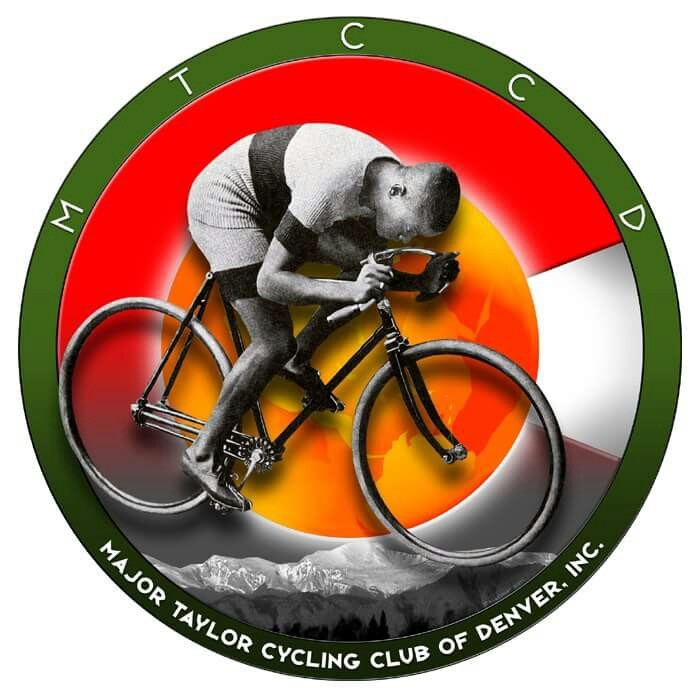





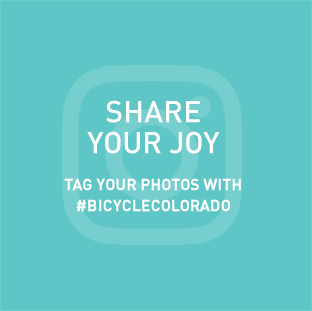



COMMENTS (1)
JT, Johnny Taylor -
Would love to join the next ride, and become a member. I enjoyed working with youth at youth biz for a few years in the 90’s